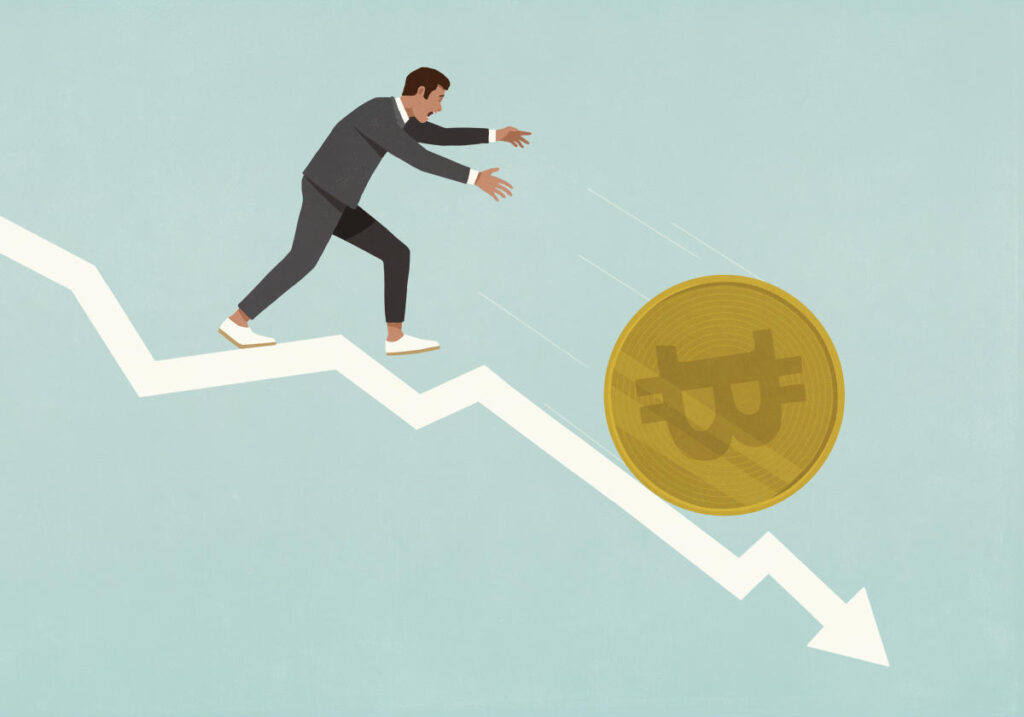Bitcoin Correction Highlights the major cryptocurrency, has corrected after reaching record highs. Despite this substantial retreat, investor stress levels have remained moderate, showing the market is maturing and investors are becoming more tolerant to volatility. The downturn, caused by macroeconomic fundamentals and short-term profit-taking, has not caused panic selling or anxiety. Investors are realizing that market volatility are part of Bitcoin’s cycle.
Recent Bitcoin Correction and Market Dynamics
Bitcoin reached $100,000 for the first time. This historic milestone was spurred by institutional interest, Bitcoin ETF launches in numerous countries, and mainstream adoption. Bitcoin Correction Highlights dropped about 20% following its peak, settling around $80,000 to $85,000.
Several variables affected the correction:
Short-Term Holder Profit-Taking As Bitcoin reached historic highs, many short-term investors profited. The price fell due to selling pressure. Economic Conditions Global central banks’ stricter monetary policies and rising interest rates have also affected the cryptocurrency industry. As investors adjust their portfolios to macroeconomic developments, riskier assets like Bitcoin temporarily correct.
Regulation Uncertainty While cryptocurrencies are becoming more popular, several governments have tightened rules. Investors, especially newcomers, are hesitant due to this uncertainty. Despite these challenges, Bitcoin investors have displayed resilience, and on-chain data shows favorable sentiment. Bitcoin Correction Highlights Measurements of Moderate Stress on Chain On-chain analysis illuminates investor behavior during market corrections. Even when the market adjusts from its all-time highs, several data indicate that Bitcoin holders are not stressed.

MVRV Z-Score
Bitcoin’s market value deviates from its historical fair value according to the MVRV Z-score. Bitcoin’s recent peak saw the MVRV Z-score below the market top zone. This suggests the market was not euphoric and investors were wary about overextending. Net Unrealized Profit/Loss The NUPL measure shows Bitcoin holders’ unrealized profit or loss. After the correction, the NUPL stayed in the “belief” zone, indicating that most investors are still profitable and not panicking.
Long-term holding behavior Users who have kept Bitcoin for over a year are not selling in huge volumes, according to data. Long-term holders have a low sell-side risk ratio, indicating strong conviction. Due to their stabilizing effect during tumultuous periods, long-term holdings are a key marker of market maturity.
Factors causing moderate stress
Several causes explain Bitcoin investors’ considerable stress:
Market Mature
The bitcoin market has changed substantially in recent years. Corrections often caused panic selling and investor confidence decreases in past bull runs. Current market cycle demonstrates investors are more aware and prepared for volatility. Institutional participation has matured the market by providing a long-term view.
Diversification/Risk Management
Many investors mix traditional and cryptocurrency in their investments. This diversification reduces risk and makes Bitcoin investors more comfortable during price volatility. Stop-loss orders and selective profit-taking are also helping investors control risk.
Good Long-Term Outlook
Bitcoin has a good long-term prognosis despite short-term dips. Bitcoin’s potential as a decentralized financial asset, inflation hedge, and store of wealth is known to investors. Many expect Bitcoin’s value to rise as governments, corporations, and financial institutions adopt it.
Regulatory Clarity
While regulatory ambiguity exists, numerous countries have made progress in setting clear cryptocurrency guidelines. Investors feel less anxious during market corrections due to regulatory clarity.
Future Implications Bitcoin investor
- Less Volatility As the market matures, severe volatility may decrease. With more long-term holders and institutional investors, the market will be more stable and rapid corrections will decrease.
- Higher Institutional Engagement Bitcoin investors’ resiliency may attract institutional investment. Bitcoin’s capacity to rebound rapidly from corrections will appeal to large financial institutions, which like stable markets.
- Continued Growth Bitcoin’s mature investment base and rising adoption equip it for long-term growth. Investments now view market corrections as healthy rather than destructive. This outlook will help Bitcoin become a dependable store of value.
Compare Investor Sentiment
Previous Cycles Current sentiment is far better than prior bull periods. Market corrections used to cause panic and large sell-offs. Although the recent decline has been calm, it suggests the market is learning and evolving. Bitcoin peaked at $20,000 in 2017 before falling 80%. The crash prompted panic and a long bear market. However, the latest fall from $100,000 to $85,000 has not caused fear or sorrow. This change in mindset shows that investors are becoming more resilient and perceiving Bitcoin as a long-term investment rather than a scam.
For More: Bitcoin Faces Hurdles Amid Trump’s Policies and Market Volatility
Conclusion
Bitcoin’s drop from its all-time high hasn’t worried investors, showing a more mature and resilient market. On-chain measures like MVRV Z-score, NUPL, and long-term holder behavior indicate no market panic. This modest stress level is due to market maturity, diversification tactics, a favorable long-term outlook, and regulatory certainty. Bitcoin investors’ fortitude throughout this correction bodes well for lowered volatility, increasing institutional participation, and long-term growth. Even during market corrections, investor mood will likely remain stable as Bitcoin evolves and becomes popular. This signals a new era of maturity and stability in the bitcoin sector.

